Fury (Dell Four Color) #1133
First Published August-October 1962
Published by Dell Publishing Inc./Western Printing and Lithographing Co.
There was no regular Fury comic book. Instead, nine issues of Dell’s second Four Color series featured Fury stories. The second incarnation of Four Color ran from 1942 to 1962 with 1,354 issues according to the Grand Comics Database. The first Fury story appeared in Four Color #781, which was published in March 1957; the last came in Four Color #1296, published in February 1962. A tenth issue was published as standalone in June 1962. Gold Key later published a single Fury comic book in November 1962.
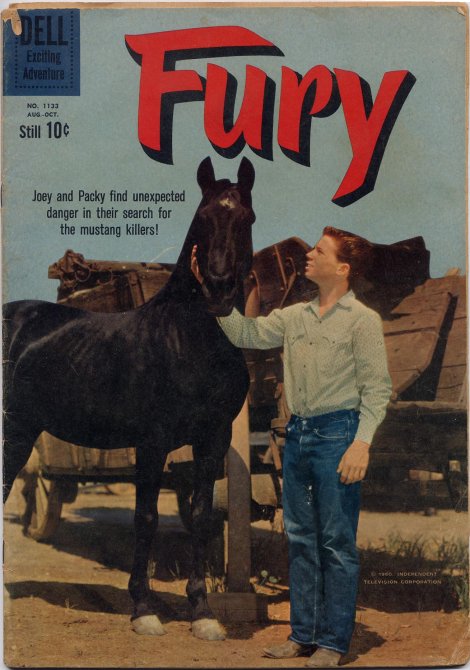
Fury (Dell Four Color) #1133 Front – Copyright 1960 Dell Publishing Inc./Western Printing and Lithographing Co.
Four Color #1133 was the sixth issue based on Fury. It has a over date of August-October 1962, which suggests it was on newsstands in June 1962 (most comic books were actually released two or three months before their cover date). The issue includes two complete 16-page stories. The first, “The Mystery Rustlers,” involves Joey and Packy stumbling upon the carcass of a mustang. The two ride off to tell Jim and Pete and when they return the carcass is gone! Later, Fury gallops off on his own. The boys follow him and discover another two bodies.
This time, Joey stays behind while Packy goes to get Jim and Pete. He doesn’t want the bodies disappearing. As the story continues, Joey and Packy are captured by a pair of thugs. Fury escapes and brings back help. It turns out these thugs are shooting mustangs from an airplane and then collecting the bodies to sell to dog food manufacturers. Thanks to Fury they’re now in custody.
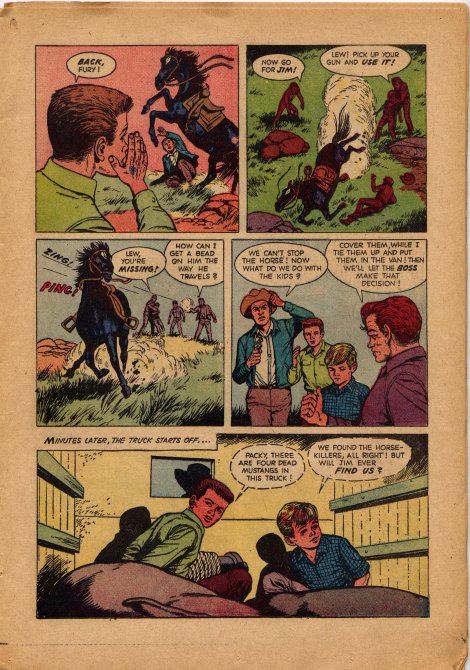
Fury (Dell Four Color) #1133 Page- Copyright 1960 Dell Publishing Inc./Western Printing and Lithographing Co.
The second story, “Intruder on the Range,” starts with Joey and Packy coming across a car on fire. Whoever was driving it is no doubt dead. The marshal determines that the driver was a member of a gang that robbed a bank and got away with $100,000. The money is burned to a crisp. Or is it? The driver of the car is alive and well with the money. And he’s using the line shack as shelter. Joey and Packy, charged with restocking the line shack, decide to keep watch for whoever has been stealing supplies.
Fury doesn’t feel like waiting and runs off. He’s attacked by a mountain lion and saved by the bank robber. Later, when the other two bank robbers attack the first, Fury repays the favor and saves the first robber (who goes by Blackie). Blackie quickly captures both robbers and Joey and Packy. Joey tells Fury to attack Blackie but the horse won’t listen. At least, not until Joey charges Blackie and is shot at. Then Fury springs into action. The robbers are apprehended and the money recovered, all thanks to Fury.
Aside from the two stories, the issue includes a one-page black and white preview on the inner front cover and two one-page historical lessons about mustangs: one in black and white on the inner back cover and the other in color on the back cover. Having never seen Fury I can’t compare the artwork to the actors. Judging from the photo cover, however, the likeness are a bit generic. For some reason Packy’s hair is two colors: yellow and orange. You can see examples of this in the page I’ve scanned above.
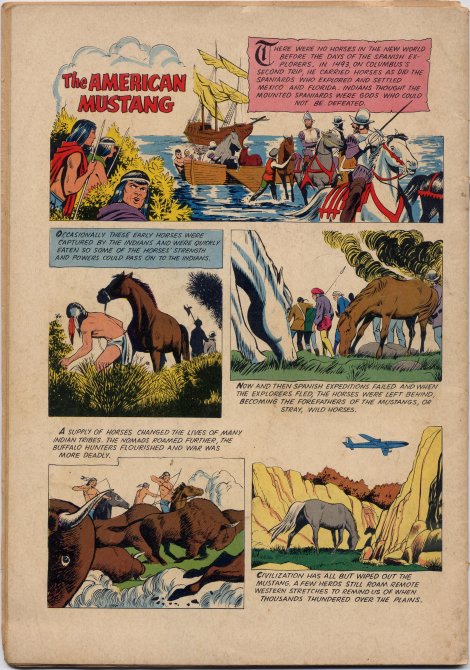
Fury (Dell Four Color) #1133 Back – Copyright 1960 Dell Publishing Inc./Western Printing and Lithographing Co.
There’s something really odd going on in the upper left corner of my copy of this issue. Just to the left of the D in the DELL logo there’s a teardrop shaped depression that cuts through all but the last five pages of the book. I have no idea what caused it..

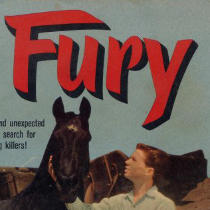
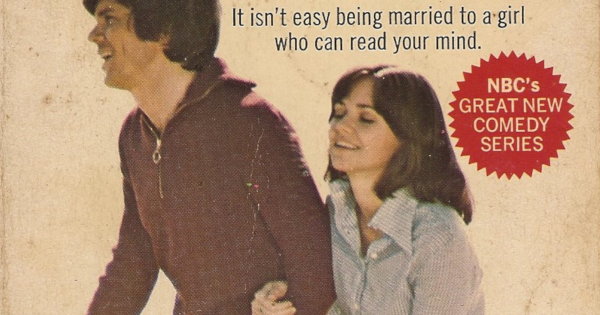
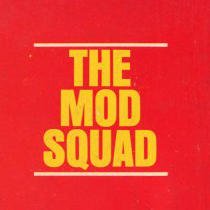
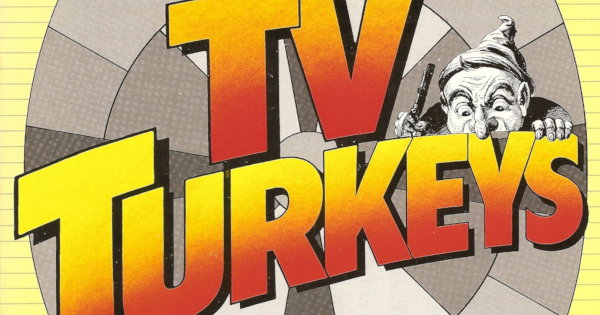



Dell’s comic book adaptations of most TV series often featured “generic” renditions of most of the main characters; even see the two “I DREAM OF JEANNIE” comic books they published in 1966? Only Barbara Eden and Larry Hagman’s likenesses were “authorized” [through the copyright owner, Sidney Sheldon Productions, Inc.], and the artist used publicity photos to get their images “right” (I recognized some of Jeannie’s “poses” during the stories were the same ones I saw in her various publicity pictures)- while “Dr. Bellows”, “Roger”, and “General Peterson” [featured in the second issue] were “fudged” so that you couldn’t quite recoginze them from their TV images.